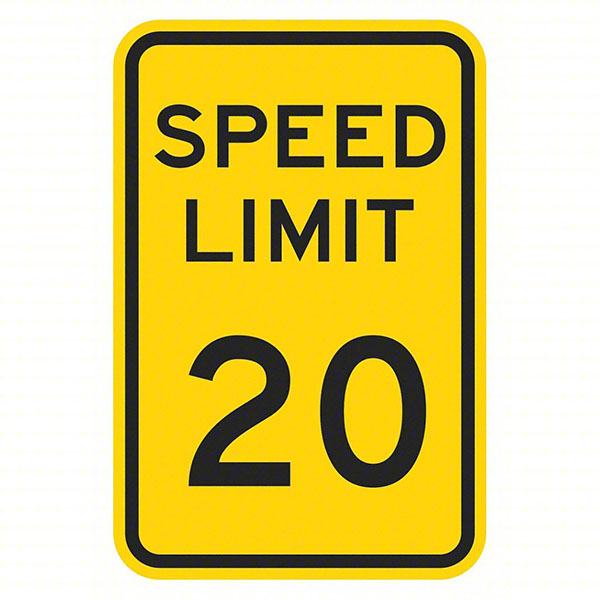What are the stopping distances for a vehicle traveling 20 mph and higher? We were curious, like so many of you, so we did a bit of research to find the answers. The research started with a stopping distance of 20mph and worked our way up to stopping at freeway speeds of 80 mph. We showcase stopping distances of both dry and wet conditions on a level flat road. Additionally, all of the stopping distances include a perception-reaction time of 2.5 seconds.
Whether you appreciate them or hate them, speed limits are an important part of American history. Connecticut was the first state to pass a speed limit law back in 1901. This law limited the legal speed of motor vehicles to 12 mph in cities and 15 mph on country roads. However, there were laws even before this that limited the speed of non-motorized vehicles.
According to The History Channel, the colony of New Amsterdam (now New York) issued a law in 1652 stating that wagons, carts, and sleighs cannot be run, rode, or driven at a gallop. Violators faced a penalty that started at two pounds Flemish, which is about $150 by today’s standards. Just in case it comes up as a trivia question; The fastest road in America is a 40-mile stretch of a toll road between Austin and San Antonio that legally allows drivers to travel at 85 mph.
Virtually all current production vehicles’ published road braking performance tests indicate stopping distances from 60 mph that are typically 120 to 140 feet, slightly less than half of the projected stopping distances. While the figures are probably achievable, they are not realistic and certainly not average; they tend to be misleading and to those that actually read them, they create a false sense of security. We have included the most current speed-vs-braking distance information in this blog.
National and international studies show that lowering the speed limit from 30mph to 20mph reduces the number of casualties. This is recognized by bodies such as the World Health Organization and the UN General Assembly recently mandated 20mph as the right speed limit where people and motor vehicles mix. Let’s learn more about what are the stopping distances for a vehicle traveling 20 mph and higher.
As a result of the studies, in May of 2022, the Salt Lake City Council voted unanimously to lower speed limits in residential areas to 20 mph, affecting some 70% of all roads in the city. Speed limit changes in Salt Lake City come as part of a larger plan to improve pedestrian safety and city livability, and these changes didn’t arrive without extensive consideration. According to the Utah Crash Summary, 2021 was the deadliest year on Utah roads since 2002 and the second consecutive year that crash-related fatalities have doubled percentage-wise in the state.
In Utah, school zone speeds are limited to 20 mph. School zones have a high population of students, especially during school hours when schools are in session. School zone signs are usually erected in almost all school zones to ensure that drivers practice safe driving in a school district where many kids are naive about road usage and traffic rules. Some school zone signs have yellow flashing lights, which serve as warning signs to alert drivers to slow down and prepare to stop. It is usually used to warn drivers of school zones or a pedestrian crossing ahead.
Even when there seems to be no sign of children around a school zone, drivers are advised to adhere strictly to the law. Most pedestrians in a school zone are students who are small children and might not be easily noticed by a driver from a distance. A child might even dart out unexpectedly. If you’re unable to maintain a particular speed without your eyes glued to the speedometer, driving’s not for you. One of the things learner drivers master early on is the ability to keep to a particular speed while occasionally glancing at the speedometer to check their speed hasn’t crept up. It’s a basic skill that’s assessed by examiners as part of the driving test. After all, driving steadily at 20mph is no different from maintaining 30, 40, or 70mph.
Vehicle Speed & Stopping Distances
Speed 20 mph
Dry= 92.5 ft
Wet=106.93 ft
Speed 25 mph
Dry= 121.7 ft
Wet=147.67 ft
Speed 30 mph
Dry=153.1 ft
Wet=195.04
Speed 35 mph
Dry= 186.98 ft
Wet=249.40
Speed 40 Mph
Dry= 223.25 ft
Wet=311.04 ft
Speed 45 mph
Dry= 261.9 ft
Wet=380.3
Speed 50 mph
Dry= 92.5 ft
Wet=106.93 ft
Speed 55 mph
Dry=346.4 ft
Wet=542.6 ft
Speed 60 mph
Dry= 392.2 ft
Wet=636.20 ft
Speed 70 mph
Dry=491.05 ft
Wet=849.20 ft
Speed 80 mph
Dry=599.40 ft
Wet=1,098 ft


